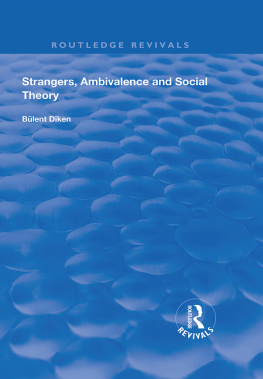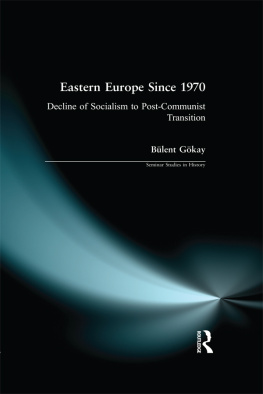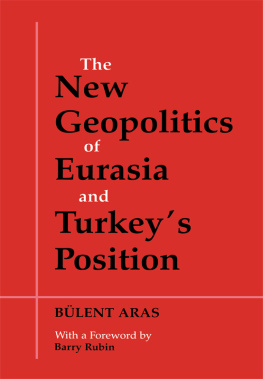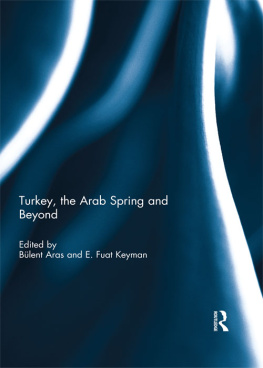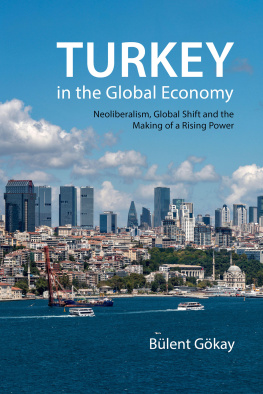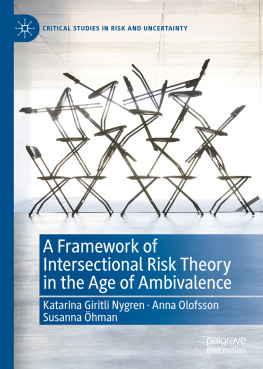First published 1998 by Ashgate Publishing
Reissued 2018 by Routledge
2 Park Square, Milton Park, Abingdon, Oxon, OX14 4RN
52 Vanderbilt Avenue, New York, NY 10017
Routledge is an imprint of the Taylor & Francis Group, an informa business
Copyright Blent Diken 1998
All rights reserved. No part of this book may be reprinted or reproduced or utilised in any form or by any electronic, mechanical, or other means, now known or hereafter invented, including photocopying and recording, or in any information storage or retrieval system, without permission in writing from the publishers.
Notice:
Product or corporate names may be trademarks or registered trademarks, and are used only for identification and explanation without intent to infringe.
Publishers Note
The publisher has gone to great lengths to ensure the quality of this reprint but points out that some imperfections in the original copies may be apparent.
Disclaimer
The publisher has made every effort to trace copyright holders and welcomes correspondence from those they have been unable to contact.
A Library of Congress record exists under LC control number: 98070994
ISBN 13: 978-1-138-38658-7 (hbk)
ISBN 13: 978-0-429-42674-2 (ebk)
This book was written between January 1994 and January 1997 as a Ph.D. dissertation financed by the Danish Social Science Research Council.
I owe thanks to the Danish Social Science Research Council for financing the project; and to the Aarhus School of Architecture for making available to me the necessary institutional facilities. The Danish Research Academy financed my 10-month stay at Lancaster University; I appreciate this. And of course I owe thanks to Lancaster University, Department of Sociology, for a wonderful and inspiring year.
I want especially to thank Niels Albertsen, Hans Mammen, Nils Mortensen and John Urry for the marvelous discussions we had. I learned much from them, and I consider myself very lucky to know them.
And thanks to Zygmunt Bauman, whose idea of ambivalence started it all for me. I am grateful for his comments on the book.
Thanks to Bob Jessop, Charlotte Hamburger and Zafer Yrkfor their response to and critique of various sections.
Judith Ugelow has read through the text. Thanks for her scrutiny.
And last but not least, thanks to my interviewees, who had the courage to expose themselves to the tape-recorder and who have trusted in my intentions.
Blent Diken, Aarhus, January 1997.
Introduction:
Immigrants on the Margin
Coming to Wonderful Copenhagen, one cannot avoid seeing the glittering signs of the Tivoli Gardens just across from the central train station. As a symbol of Denmark and Danishness, Tivoli has become one of the fortresses of the Danish tourist and leisure industry, and thus one of the first stops on the tourist path. Perhaps ironically, Tivoli is the place where the foreign element, the Orient, first appeared so explicitly and visibly in Denmark.
Georg Carstensen, who grew up in Algeria as a diplomats son, created with Tivoli (established in 1843) and later with Alhambra (established in 1857) a Danish department of the Orient, a realization of 1001 Nights. In Tivolis bazaar, with onion-shaped domes and a facade decorated with lamps, every visitor could feel like Aladdin, experiencing an almost systematic sublimation of all distances and borders. (Zerlang 1994: 6; my translation)
According to Martin Zerlang, Orientalist forms were popular in architecture, painting and furniture design in Denmark in the 1840s, but Tivoli was the spatial centre of this form. As such, Tivoli was also the symbolic centre of Danish modernity. The Danish writer, Jrgen Bonde Jensen, characterized Georg Carstensen as the first modern man in Denmark. He was the first modern man at a time when Denmark was only one of those damned peasant countries, according to Engels, and in a city the claustrophobia and provincialism of which Kierkegaard satirically criticized (Zerlang 1995: 2, 5, 20).
Given Tivoli and the idea that Danish modernity began with it, one could say that the symbolic or imagined Danishness of Tivoli, or of Danish modern urban geography in general, has been largely dependent upon the internalization of an alien element, upon hybridization. Today, this is often concealed by a forgetfulness, which deeply characterizes contemporary discussions of Danish culture in the context of immigration.
Approximately 120 years after Tivoli was built, the cultural element of the Orient was once more brought to Denmark, but this time in the form of the immigrant. They did not come as tourists, to gaze upon Tivolis architecture, nor as persons, but as a category (alien worker) or, perhaps more aptly, as a commodity, that is, labour power. In contrast to the easy assimilation of the Orient in Tivoli, the assimilation of these immigrants has been ambivalent. Although invited and assimilated as labour in the earlier phases of immigration, immigrants during later phases were gradually pushed outside the reach of systematic and social integration. In the 1990s, immigrants have often been perceived as outsiders. Today, the discourse of immigration operates with homogeneous, hierarchical identities, positioned from the centre outwards: Danes, Turks, immigrants, refugees, etc.
The in-between reality experienced by the immigrant is negatively reflected also in more general social phenomena. As Saskia Sassen points out:
the city concentrates diversity . Its spaces are inscribed with the dominant corporate culture but also with a multiplicity of other cultures and identities, notably through immigration. The slippage is evident: the dominant culture can encompass only part of the city. And while corporate power inscribes noncorporate cultures and identities with otherness, thereby devaluing them, they are present everywhere. (Sassen 1994: 122)
According to Sassen the city of the immigrant and immigrant communities are actually a part of our urban geography, and the invisibility and devaluation of these communities are a good part of the colonial history, which is increasingly in need of being redefined and rewritten (see Sassen 1994b).
In the context of immigration, this socio-political problem of underrepresentation, which will be dwelled on at length in this study, coincides with another problem, over-representation. Immigration is a popular issue that many people are concerned with and have an opinion about. Much research is carried out on this topic, which is constantly problemetized, and in the Danish mass media, immigration is one of the most popular subjects. Consequently, cultures of immigrants are over-represented. Thus, immigrant culture(s) and their ghettoes can be regarded as sites of representations, within which immigrants, their lives and cultures increasingly become subjects of the discourse of immigration. This discourse determines who is in the position to talk about them and in which ways. Accordingly, one could say, immigrant cultures are defined, to the extent they are seen and shown, by the metaphors of the discourse of immigration.
The field of immigration is thoroughly saturated with an already existing body of knowledge. In this preconstructed world, reality offers itself to you. The given gives itself. This is one of the reasons that the given is so dangerous (Bourdieu 1992: 44). It can be argued that, in the context of immigration, familiarity is the staunchest enemy of inquisitiveness and criticism for sociological thinking (Bauman 1990: 15). Confronted with this common sense familiarity, which constantly reasserts the given and unquestioned assumptions in the field, the task of sociology, as it is defined by Bauman, is to act as a meddlesome and often irritating stranger. Hence, one of the ambitions of this study is to defamiliarize the familiar and what is taken for granted in the field of immigration. I have adapted a deconstructivist position, which mainly builds upon Foucaults, Derridas, Games and Baumans works. My main purpose in this has been to show the fictitious and constructed character of the identities that are normally presupposed and taken for granted. I attempted this by letting the immigrant speak through interviews. Seeing him or her as a subject rather than as an object of the discourse was illuminating because it showed that much of what is ascribed to the immigrant or the truth in the field is indeed a fiction. But what was expressed by those interviewed indicated even more: as Borges says, if the characters of a fictional work can be readers or spectators, we, its readers or spectators, can be fictitious (quoted in Game 1991: 3). In other words, a deconstruction of the images about them also cracks the images of ourselves, or us. This study explicitly suggests that we cannot consider immigrants as objects of an isolated research field without referring to and reflecting upon us.

